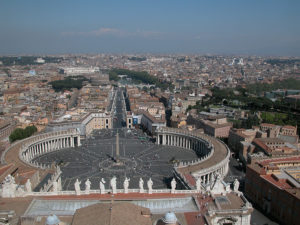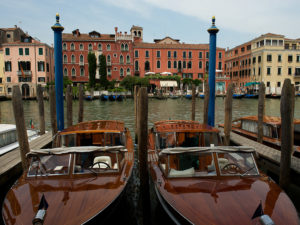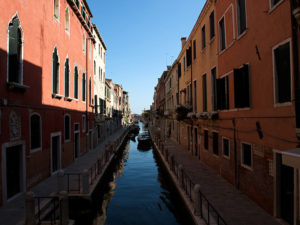September 2009
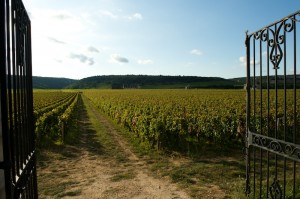
“Every now and then, we are lucky enough to encounter Burgundy which sets our hearts afire.” Clive Coates, Master of Wine, Côte D’Or, A Celebration of the Great Wines of Burgundy,
Vintages
2007: “A unique year… 2007 was another extraordinary year of such advanced growth that we had to begin harvesting in August… At the moment… our red wines are… well structured, ample and rich. Barrel aging has enabled this fruity and balanced vintage to evolve well. Our white wines are expressing floral and fruity notes. They are ripe with good freshness and backbone. 2007 is a year in which the terroir overrides the expression of the grape variety. The barrel aging has permitted them to express the best of their typicity,” affirmed Bouchard Père & Fils. Jean-Michel Chartron, who runs Domaine Jean Chartron in Puligny-Montrachet commented, “2007 vintage is opposite to the rich, round and easy to drink young 2006 vintage indeed, but it looks more classic to me. Real lovers of white Burgundy might prefer the freshness and precision of 2007s.”
2008: “A promising vintage… difficult weather conditions throughout the year which led to widespread outbreaks of mildew, odium and botrytis… The Pinots had reached good maturity and great concentration thanks to the excellent weather conditions, which returned on 15th September, giving plenty of sunshine and a beneficial drying North wind. (As for) the Chardonnays… the characteristics of the terrors will outweigh the varietal aspect of the wines,” noted Bouchard Père & Fils. Jean-Michel Chartron observed “2008, because of early blooming and rainy summer, is really a tough vintage. The key to the success was hard work in the vineyard to avoid any development of mildew and odium and waiting a long time for a good maturity as the sun shined only from late August on. Those who waited until early-mid October to harvest did very nice wines, thanks to the lovely Indian summer that we had then.”
2009: Just coming off the most recent harvest, Jean-Michel Chartron pointed out “2009 looks much easier as the good weather during the whole summer enabled a perfect maturity and a great balance between sugar and acidity. The wines are now still fermenting and look very promising.”
Terroir = Location + Climate + Varietals
Location
Burgundy is a wine region in France that includes Chablis, Côte de Nuits, Côte de Beaune, Chalonnaise, Mâconnais and Beaujolais. The majority of Burgundy is a narrow strip of land north of Lyon and south of Dijon, straddling Beaune. I recently visited this part of Burgundy (Côte de Beaune and Côte de Nuits), so this will be the focus. If I have my way, this will be a recurring trip, so Mémé Néna, Tata Michelle, Tata Jeanette and Tonton Jeannot, be careful what you wished for.
In some regards, most of Burgundy is so much smaller than it seems on a map. The heart of Burgundy is only about 40km (25 miles) long. Inclusive of many stops along the way (mandatory for tastings), from base to tip, it is completely drivable within a few hours time. Most Burgundian wines are either 100% Pinot Noir or 100% Chardonnay, so that adds to the ease of understanding these wines. It’s the sheer number of individual vineyards that makes Burgundy so difficult and confusing.
Lots and Lots of Small Plots
Prior to the French Revolution, either the church or nobility owned most of the land in Burgundy. The French Revolution was both anti-church and anti-aristocracy (“let them eat cake” reverberates in the background), so properties of the church and nobility were seized and sold off. The Napoleonic Code revamped inheritance laws, forcing equal division of property as opposed to the prior law that left all property to the eldest son. From generation to generation, and heir to heir, the land became increasingly fragmented. As a result, much of Burgundy is a whole bunch of small vineyards, all with distinct names (“lieu-dit” or said place), registered at city hall.
Classification
Think of the classification system in Burgundy as a giant triangle, with the base of the triangle being the bottom of the hierarchy (and greatest volume by production) and the top consisting of the highest quality (and lowest volume by production). From top to bottom, this is how it would look:
- Single Vineyard ACs – (1) Grands Crus or (2) Premiers Crus (ex. Corton and Puligny-Montrachet, Les Combettes, respectively)
- Communal ACs (specific village, ex. Puligny-Montrachet)
- District ACs (specific district, ex. Côte de Beaune Villages)
- Regional ACs (ex. Bourgogne Rouge AC)
France categorizes their wines by terroir – so, for higher quality wines (Grands Crus and Premiers Crus), each is an appellation in its own right, and the wines are categorized as such – so not by wine maker, not by Domaine, not by varietal, but rather, by the distinct parcel of land that the grapes come from. The names of the Premiers Crus are known by the name of the village first, with the name of the distinct site following, whereas Grands Crus are known exclusively by their distinct site and nothing else is required. It can get very confusing if old world classification is not the logic you are familiar with. Throw another language into the equation, along with the sheer magnitude of distinct plots (32 Grands Crus and 562 Premiers Crus), and it’s a mouthful.
Let’s think of the Burgundy classification in a different context. If you were to reside in the United States, Regional AC wines would be wines coming from anywhere within the state you lived in. I live in New York, so for me, the wine could come from anywhere in the state of New York – maybe New York city, maybe Albany, maybe both. Maybe it’s good, maybe it’s not. All I know is that the wine is made in the State of New York and it would be classified as “State of New York.”
At the District AC level, the wine could come from anywhere in New York County – the West Village, Chelsea, Tribeca, the Upper East side, etc.. The wine would be classified as “New York County.”
At the Communal level, we know the wine could come from one or more distinct plots of land within the commune. Using our New York example, let’s say the wine came from one or more places in the West Village. The wine would be classified as “West Village.” Note: There are some instances where a Communal level wine could come from a single vineyard. In this instance, it would be noted on the label, but in smaller font size than the name of the village.
Wine from Single Vineyard ACs comes from one distinct plot of land. The names of the Premiers Crus are known by the name of the village first, with the name of the distinct site following (ex. Beaune du Château Blanc – Beaune is the village and the distinct plot of land is Château Blanc). There are distinct, but numerous (only 562) plots of land, at the Premiers Crus level. So, using our New York example, the wine would be classified as “West Village, Bleecker Street.”
The Grands Crus are at the top of the triangle and are known exclusively by their geographical distinction. By law, nothing else is required since there are only 32 (ex. Clos de Vougeots – There is no mention of a village. That one specific plot of land is how it is classified). Since the Grands Crus are distinct entities, using our New York example, the wine would be classified as “Time Warner Center.” To add to the confusion, a Grand Cru, such as Clos de Vougeots, consists of about 124 acres with about 82 owners. The Time Warner Center has a ton of restaurants, bars and shops. In our example, how do we know which restaurants, bars and shops make the best wines? Even though the wines wouldn’t be classified by the names of the restaurants, bars and shops, the wines would still have that name on the label. In all examples mentioned, when examining how the wine is classified, maybe the wine is good, maybe it’s not. This is when we examine the label to see who the wine maker (or negociant) is. In each of the examples above, even though wines would not be classified by the estate or the wine maker, the name of the producer is listed on the label and aids with quality control, it’s just not how it’s classified.
Most experts feel that 90% of the wine we consume has to do with the possibilities of the terroir – location, climate and varietal(s) – so the focus should be on the terroir. The location will always remain static. Don’t get frustrated. It just requires a different thought process. The wines are so yummy, so the payoff exists. On the flip side, if I asked most of my French family which varietals they liked, they’d shrug their shoulders. They know they like Burgundian wines. (They stick with these wines because it is what they know. Why fix something that isn’t broken?) However, they wouldn’t be able to tell you that they like Pinot Noir or Chardonnay. They know the wines they love by location exclusively. It’s not wrong or right; it’s just a different school of thought.
Soil:
Côte de Nuits and Côte de Beaune are separated into two parts around the town of Beaune, Côte de Nuits to the north and Côte de Beaune to the south. Côte de Beaune produces about 57% red and 43% white wine* (but 7 of the 8 Grands Crus in Côte de Beaune produce white) and Côte de Nuits primarily consists of reds. Back in the days of the dinosaurs, most of Burgundy was under water, resulting in lots of small fossils that are omnipresent in the soil there today. As a result, the soil is well drained, and limestone rich. There is also some clay, and minerals such as iron, magnesium and lead.
Climate
Burgundy has a continental climate with four seasons. Winters are frigidly cold and summers are fairly warm.
Varietals, that’s “Easy Breezy”
Most Burgundian wines are comprised of either 100% Pinot Noir or 100% Chardonnay. From time to time, you might see Aligote or Muscadet, but Pinot Noir and Chardonnay rule the majestic Côte de Beaune and Côte de Nuits. Further south in Beaujolais, Gamay rules.
- Chardonnay – Generally speaking, most of the Chardonnays in the Côte de Beaune go through malolactic fermentation (often referred to as secondary fermentation), which is the process of converting harsh malic acids into softer, milky acids. Wines are barrel rather than steel aged. This is why these Chardonnays have that buttery, creamy, hazelnut flavor rather than the steely (but still so lovely) wines of Chablis, which are also 100% Chardonnay, but aged in steel tanks. Chardonnay just can’t get enough of the limestone soils of the Côte de Beaune, which contributes to that fantastic lingering minerality. Chardonnay thrives when there is less clay, so toward the top of slope in the Côte de Beaune is optimal.
- Pinot Noir – Think red fruits here – cherry, raspberry and strawberry. Over time, throw in the possibly of cedar, sandalwood, some cigar box, gamey and vegetal notes. These grapes are thin skinned and very sensitive to rot. This past year, we happened to be there during the harvest and it started to rain, so every possible warm body was out in the field frenetically working. Pinots are worshiped for their finesse and elegance. During fermentation, some use wild and natural yeasts often resulting in that barnyardy, old world funk (which I LOVE). Pinot thrives in the limy marl (clays, calcium and magnesium carbonates) present in this area.
What’s Next?
In Côte de Nuits and Côte de Beaune, vines are very densely planted. With a competitive root system, the plant digs deeper into the soil and gets those nice, minerally elements. Vines are trained along low wires and primarily use the single guyot pruning system (a single, horizontal cane from the trunk).
In the feature articles to follow, I am going to profile:
- Bouchard Père & Fils – a massive, historic and amazing domaine; 130 hectares (321 acres), with 12 hectares (30 acres) of Grand Crus and 74 hectares (183 acres) of Premiers Crus extending throughout Côte de Beaune and Côte de Nuits, so both white and red wines
- Domaine Jean-Chartron – located in Puligny-Montrachet; 12 hectares (30 acres) of Grands Crus and Premiers Crus in Puligny, gorgeous white wines)
- Wines from the I tasted from Côte de Nuits (reds) at a lovely wine bar in Morey Saint-Denis
- What fabulous Burgundies can you pick up from your local wine store for under $40?
As an aside, there’s a lot of material I’ve learned over time from books, tests, tasting, meeting with wine makers and others in the business, etc. which I have jammed in my head. I must reference Côte D’Or, A Celebration of the Great Wines of Burgundy, by Clive Coates, Master of Wine. His book is the most comprehensive one I’ve read on Burgundy. His “tell it like it is” style is refreshingly honest, without the gimmicks or obsequious comments many other wine writers make. If you have a passion for these wines, this is the book you should pick up.
*source Certified Specialist of Wine Study Guide
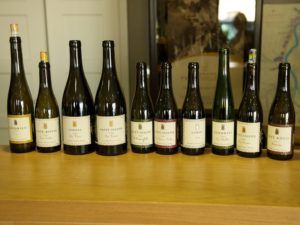 was intrigued to learn that he was formally educated as a mechanic, but found himself drawn back to his family’s roots of wine making. He took over his father’s estate in 1987. The Domaine now has 128 acres, with a lot of small parcels, requiring 5 weeks to harvest. Yves Cuilleron is a wine making genius, an absolute perfectionist and a phenomenal multi-tasker. He is well regarded by his peers, having engaged in many joint ventures, including Les Vins de Vienne (The Wines of Vienne), a joint venture with other well known vintners in the Northern Rhône (Pierre Gaillard, François Villard and Pierre-Jean Villa) where they resurrected fallow land and, as a result of their efforts, an application for AOC status is now in process. Mr. Cuilleron graciously answered my many follow-up questions post our visit to his vineyard.
was intrigued to learn that he was formally educated as a mechanic, but found himself drawn back to his family’s roots of wine making. He took over his father’s estate in 1987. The Domaine now has 128 acres, with a lot of small parcels, requiring 5 weeks to harvest. Yves Cuilleron is a wine making genius, an absolute perfectionist and a phenomenal multi-tasker. He is well regarded by his peers, having engaged in many joint ventures, including Les Vins de Vienne (The Wines of Vienne), a joint venture with other well known vintners in the Northern Rhône (Pierre Gaillard, François Villard and Pierre-Jean Villa) where they resurrected fallow land and, as a result of their efforts, an application for AOC status is now in process. Mr. Cuilleron graciously answered my many follow-up questions post our visit to his vineyard.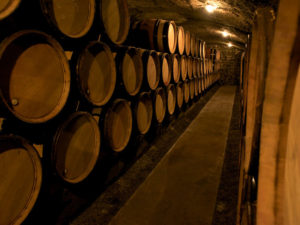
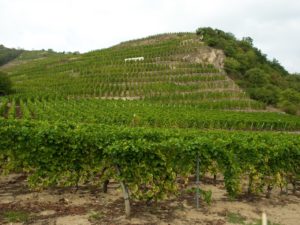
 In Côte Blonde, the southern vineyards, Viognier dominates. The sandy, schist and calcareous soil on top of its granite base produces elegant and feminine wines with a great deal of finesse. In Côte Brune, the northern vineyards, Syrah dominates. The schist and iron rich soils along with the different micro-climates produce powerful and more tannic wines.
In Côte Blonde, the southern vineyards, Viognier dominates. The sandy, schist and calcareous soil on top of its granite base produces elegant and feminine wines with a great deal of finesse. In Côte Brune, the northern vineyards, Syrah dominates. The schist and iron rich soils along with the different micro-climates produce powerful and more tannic wines.
